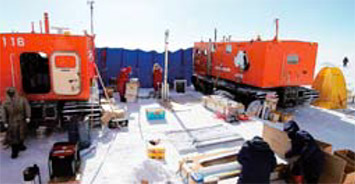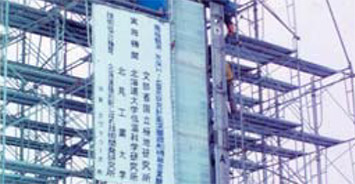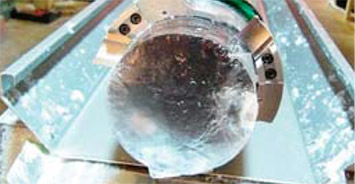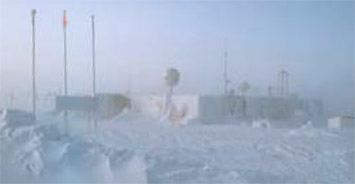National Institute of Polar Research
Ice Core Research Center
Uncovering the history of climate change from ice cores
Director Kenji KAWAMURA
Overview
Polar ice sheets and glaciers are composed of strata of snow that have accumulated over hundreds-of-thousands of years. An ice core, which is a columnar ice sample that has been extracted by drilling, can be used to infer the atmospheric components, temperature and precipitation, marine and terrestrial environmental conditions, and even the extraterrestrial conditions that were present when the snow was originally deposited. Ice cores can cover time scales of more than one million years. Such extensive and detailed information of environmental changes over a period of million years can only be obtained from ice cores. As global warming progresses, the information provided by ice cores has become extremely important for understanding the global climate system and for making future predictions. The Ice Core Research Center was established to comprehensively promote ice core research as the key center of Japan, which conducts joint research in Japan and overseas.
Advanced ice core drilling technology
The National Institute of Polar Research has the world's most advanced deep-ice drilling technology. We have conducted deep drilling twice at the Dome Fuji station, which was built inland from the Antarctic ice sheet and has produced ice cores covering 720,000 years. Furthermore, we have also extracted ice cores at various depths and ages in various parts of the world.
Elucidating past environmental changes
From analyses of ice cores, many of the environmental changes on Earth can be clarified as time series and spatial distribution data. Ice cores include a history of changes in greenhouse gases, such as carbon dioxide and methane, as well as changes in the transport of water and various materials, atmospheric and oceanic circulations, aerosols, biogenic activities, ice sheets, and volcanic eruptions etc.
Ice cores drilled in various places and low-temperature facilities
The Center promotes operations, such as the management and analysis of different ice cores and snow samples extracted from polar ice sheets and glaciers, provision of ice-core and snow samples, and shared use of cold-room facilities. In the cold-room facilities, we have Dome Fuji deep cores that were drilled in Antarctica, shallow cores that were drilled in inland and coastal areas of Antarctica, deep cores drilled in Greenland, shallow cores drilled at different sites in the Arctic, and snow samples collected in polar regions. These samples have been categorized and are stored at low temperatures. By analyzing ice cores with a large spatial coverage, it becomes possible to envisage the spatial distribution and temporal relationships between environmental changes at different spatiotemporal scales.
Development, dissemination, and exchange of analytical techniques
The Center uses a wide range of technologies to analyze ice cores. These include core cutting/processing/pretreatment techniques, melting techniques, various gas analyses, stable water isotope analyses, ion analysis, solid particle analysis, tritium analysis, and physical crystal analysis. Many of these technologies are unique in the world. In recent years, remarkable progress has been made in high-resolution continuous analytical techniques. We strive to develop and apply advanced analytical techniques, and promote the exchange of technical knowledge among domestic and overseas research institutes.
Joint research and graduate education
The Center comprehensively promotes cooperation and collaboration with domestic and overseas research institutions, universities and researchers. We undertake collaborative research initiatives in ice core drilling in harsh polar fields, ice core management and analysis, data analysis, and outputs as publications. We welcome visits by students who are interested in these research activities.

Shallow drilling inland in Antarctica

Comprehensive testing of a deep drilling system in Japan

A deep ice core immediately after extraction

Dome Fuji Station, Antarctica









